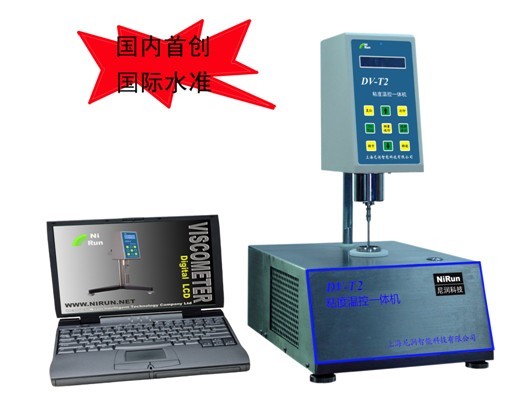This product is a bacteriophage T7 RNA polymerase derived from recombinant protein expression in Escherichia coli. It catalyzes the 5'→3' synthesis of RNA on double-stranded DNA from its T7 promoter sequence (5'-TAATACGACTCACTATAG*-3') and uses NTPs as substrates. The DNA with double-stranded linear blunt ends or 5'protruding ends can be used as templates for T7 RNA polymerase, so linearized plasmids and PCR products can be used as templates for in vitro synthesis of RNA.
Note: G* is the first base of the RNA transcript.
This product is produced in accordance with GMP regulations, and provided in liquid form.
Product Properties
|
Source
|
Recombinant E. coli with T7 RNA Polymerase gene
|
|
Optimum Temperature
|
37℃
|
|
Storage Buffer
|
50 mM Tris-HCl, 1 mM EDTA, 10 mM DTT, 100 mM NaCl, 0.1% Triton X-100,50% (v/v) glycerin,pH7.9@25℃
|
|
Unit Definition
|
The amount of enzyme required to incorporate 1 nmol of [3H] GMP into the acid-insoluble precipitate within 1 hour at 37°C and pH 8.0 is defined as 1 unit.
|
Contents
| Contents No. |
Name |
Catalog No./Specification |
|
10625ES10
(10 KU)
|
10625ES60
(100 KU)
|
10625ES86
(2,500 KU)
|
10625ES96
(25 MU)
|
10625ES99
(100 MU)
|
| 10625 |
T7 RNA polymerase (250 U/μL) |
40 μL |
400 μL |
10 mL |
100 mL |
400 mL |
【Note】This product does not contain 10×Transcription Buffer (Cat#10627).
Applications
1. Single-stranded RNA synthesis (including mRNA, siRNA, gRNA and other RNA precursors, as well as isotope-labeled or non-isotope-labeled RNA probes).
2. Synthesis of capped mRNA using cap analogs.
Shipping and Storage
T7 RNA Polymerase GMP-grade products are shipped with dry ice and can be stored at -15℃ ~ -25℃ for one year.
Experimental methods
I. In vitro transcription without cap–analog
1. Combine the following reaction components:
|
Component
|
Volume(μL)
|
Final concentration
|
|
10× Transcription Buffer
|
2
|
1×
|
|
CTP / GTP/ ATP/ UTP (100 mM each)
|
2 each
|
10 mM each
|
|
T7 RNA Polymerase (250 U/μL)
|
1
|
–
|
|
Pyrophosphatase, Inorganic (1 U/μL)
|
0.04
|
|
|
RNase inhibitor (40 U/μL)
|
0.5
|
–
|
|
RNase free H2O
|
Up to 18
|
–
|
|
DNA template
|
2 (100 ng-1 μg)
|
–
|
Note: 1) The DNA template should be added last, because the 10×Transcription Buffer contains high concentration of spermidine, which may cause precipitation of DNA templates.
2) It is recommended to keep the buffer and water at room temperature before use. The reaction mix should be prepared at room temperature because spermidine will cause precipitation of high-concentration DNA templates at low temperature.
3) If the transcript is less than 100 nt, the templates should be increased to 2μg.
4) If you need RNase inhibitor (40 U/μL), please purchase our company's product cat#10621.
5) If you need Pyrophosphatase, Inorganic (1 U/μL), please purchase our company's product cat#10620.
6) In order to ensure effective transcription of a specific region, it is recommended to cut the DNA template downstream region into blunt ends or 5'protruding ends.
2. Incubate at 37°C for 2-4 h ( if the transcript is less than 100 nt, increase the incubating time to 4-8 h).
3. After the reaction, add 2U DNase I (Cat#10611) and incubate at 37°C for 15-30 min to degrade the DNA template.
4. Purification of transcripts: RNA Cleaner magnetic beads(Cat#12602) can be used for purification of transcription products via removing proteins, salt ions and other impurities. Phenol/chloroform purification method can also be used (the specific steps can be obtained by contacting Yeasen).
II. In vitro transcription with cap1-analog
1. Combine the following reaction components:
|
Component
|
Volume(μL)
|
Final concentration
|
|
10× Transcription Buffer
|
2
|
1×
|
|
CTP / GTP/ ATP/ UTP (100 mM each)
|
2 each
|
10 mM each
|
|
Cap1-analog (100 mM each)
|
2 each
|
10 mM each
|
|
T7 RNA Polymerase (250 U/μL)
|
1
|
–
|
|
Pyrophosphatase, Inorganic (1 U/μL)
|
0.04
|
|
|
RNase inhibitor (40 U/μL)
|
0.5
|
–
|
|
RNase free H2O
|
Up to 18
|
–
|
|
DNA template
|
2 (100 ng-1 μg)
|
–
|
【Note】If you need Cap1-analog, please contact our company.
2. Incubate at 37°C for 2-4 h.
3. After the reaction, add 2U DNase I (Cat#10611) and incubate at 37°C for 15-30 min to degrade the DNA template.
4. Purification of transcripts: RNA Cleaner magnetic beads(Cat#12602) can be used for purification of transcription products via removing proteins, salt ions and other impurities. Phenol/chloroform purification method can also be used (the specific steps can be obtained by contacting Yeasen).
Notes
1. Types of DNA templates: It is recommended to use linearized plasmids or PCR products containing T7 promoters as templates.
2. The purity of the DNA template will significantly affect the yield of in vitro transcription. Residual RNase during the plasmid DNA extraction process will significantly affect the quality of transcribed RNA. Plasmid DNA template are recommended to be extracted by phenol-chloroform; PCR products are recommended to be purified by gel.
3. For your safety and health, please wear personal protective equipment (PPE), such as laboratory coats and disposable gloves, when operating with this product.
HB230406









